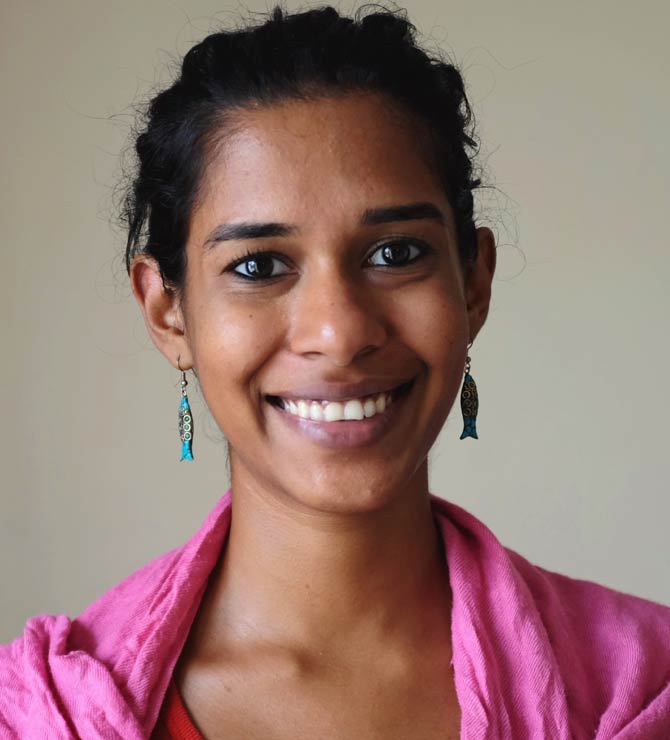Ethnographic researcher Vishnupriya Das has been studying 12 dating apps and asking one key question – how is young India dealing with them?

Since autumn 2015, Vishnupriya Das signed up on a quite a number of dating apps. If you have bumped into this PhD student and tried initiating a conversation but haven’t heard back from her, don’t be disheartened. It is only because Das, 25, is not there to date, but to research. Currently based at University of Michigan, USA, Das’ ongoing research is on mapping the dating app ecosystem in India to understand the changing romantic and sexual possibilities available in the country.
ADVERTISEMENT

Representational picture
Das breaks it down for us. Local and global dating apps, websites and surrounding infrastructure for dating – how is India embracing (to put it mildly) this new wave of intimacy? Das has been spending time at Vikhroli’s Godrej India Culture Lab for the last two months and will be part of a panel discussion titled “India LSD (Love Sex Desire) on technology and the erotic in India, to be held on Friday, July 15. She will be joining filmmaker and mid-day columnist Paromita Vohra, radio producer Chhavi Sachdey, India Head of Tinder Taru Kapoor and Sachin Bhatia, CEO and co-founder of TrulyMadly.
In her study, which involves speaking with dating app developers and users, Das noticed some “peculiarities”. “The spectrum of definitions for dating is different in India, unlike the West. ‘Dating’ as a term is getting contested among the urban young,” she says. Essentially, there is no one definition for dating left in a country anymore. Is it a one-night stand? How long is long-term?

Vishnupriya Das
Next, what happens when you struck a chemistry goldmine on a dating app? You need to meet, and this, says Das, is where the young enter a zone fraught with troubles in India. “If you need to take the conversation to the offline space, into the physical world, there is a problem with urban spaces in the country. Public spaces are very limited, which means that there is not enough means to display romance publicly. The transition from online to offline is not easy, and this means extended digital conversations between people,” she says, adding that personal spaces are not that much better off than the public. The average adult Indian lives with family, which comes with its limitations. “Bringing a person home is then tied up to larger social structures. If you are living with an extended family, and if they are conservative, then it makes it difficult for dates. This pushes young couples to seek more dangerous options [such as shady hotels],” she continues.
Das, who completed her Master’s degree in Contemporary India from Oxford University, goes on to compare and contrast the apps available in India, such as Tinder, TrulyMadly, Happn and Aisle. “Tinder, which launched globally in 2012 and entered India in 2013, captured public imagination and now has given rise to ‘Tinderification’ of dating apps globally,” she explains. Happn, the app which prompts you every time another Happn user crosses your path, seems to have caught her attention. “Happn added the idea of chance romances and serendipity to the dating app scenario – will you or won’t you find the one?”
Let’s not generalise however. Das has observed that while the urban young in metropolitan India have taken to dating apps, the same can’t be said of their rural counterparts. Researching in rural Bihar and Jharkhand, Das observed that the primary dating portals continue to the tried-and-tested Whatsapp and Facebook. We offer our own analogies. Remember last year’s Bollywood film Masaan and this year’s Marathi flick Sairat?
A key observation that Das makes has to do with the dating apps for gays and lesbians, which has not had found a significant market in India, due to legalities. After chuckling about Scruff, this niche app for gay men with beards, Das says that Grindr has extended itself to the discussion on gay rights. Case in point: Grindr for Equality.
With this no clear idea of what dating is, the young app user, who can choose among several in India, is confused. Add to this movies and news on dating – then we are talking a whole new level of bewilderment. However, Das is far from being hard on them. “Being young translates to being confused,” she says.
 Subscribe today by clicking the link and stay updated with the latest news!" Click here!
Subscribe today by clicking the link and stay updated with the latest news!" Click here!






